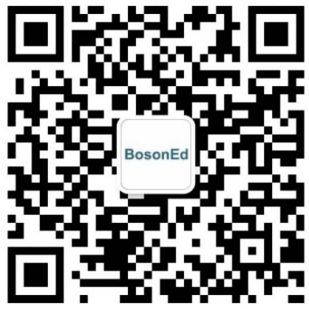Introducing college majors: Medical Related
Public Health
As the name suggests, Public Health focuses on issues related to community and population health. Core topics include epidemiology, biostatistics, health policy and management, nutrition, environmental and climate health, child psychology and family health, and public health big data.
Application Information
● Undergraduate: The application process for undergraduate programs in Public Health is similar to other majors, with no additional specific requirements.
● Master’s Degree (MPH): For graduate studies, applications are typically submitted through the SOPHAS (Schools of Public Health Application Service) system. Some schools, such as UNC, require both SOPHAS and a separate application through their university’s system.
Schools Offering Public Health Programs
● Undergraduate Programs: Public Health is not widely offered as an undergraduate major. Recommended schools include:
○ UNC-Chapel Hill
○ University of Michigan
○ Texas A&M
○ UC San Diego
○ UT Austin
○ University of Florida
● Top MPH Programs:
○ Harvard University
○ Johns Hopkins University
○ UNC-Chapel Hill
○ Columbia University
○ UC Berkeley
Job Prospects
One significant advantage of public health programs is their emphasis on practical experience. For example, UNC requires students to complete a minimum of 200 hours in a practicum, working with government agencies, NGOs, or other partnered organizations (paid or unpaid). Graduates typically work in government, NGOs, or nonprofit organizations. Salaries vary depending on the sector but generally range from $60,000 to $120,000 annually. While not exceptionally high-paying, the field offers fulfilling career paths and opportunities to make a meaningful impact on public well-being.
Radiation Therapy
Radiation Therapy programs are typically housed within medical schools. Unlike becoming a physician (which requires an MD and years of training), this field has lower barriers to entry, shorter study durations, and less demanding exams. For example, the clinical diagnostic radiation therapy program at the University of Pennsylvania takes three years of study and includes a one-year fellowship.
Schools Offering Undergraduate Radiation Therapy Programs
Because this is a technical field, there aren’t many schools offering undergraduate degrees in Radiation Therapy. Notable programs include:
● University of Michigan (Flint)
● UNC-Chapel Hill
● University of Missouri-Columbia
● Rutgers University
Graduates must obtain certification from the American Registry of Radiologic Technologists (ARRT).
Job Prospects
Radiation Therapy is an attractive field due to its shorter education timeline, lower application thresholds, and significant career growth opportunities. Programs often provide internship experiences during the course of study. For instance, at the University of Pennsylvania, students complete rotations at hospitals like Penn Medicine and the world-renowned Children's Hospital of Philadelphia (CHOP).
It’s not difficult to find a job, with median Salary of $61,370 annually. With its combination of lower entry barriers, solid earning potential, and job demand, Radiation Therapy is an excellent choice for those interested in healthcare without the lengthy commitment of pursuing an MD.
Nursing
Nursing is a medical-related field with a significant employment gap in the U.S., offering high demand and stable career opportunities. While the job can be physically and emotionally demanding, it is not overwhelmingly so compared to physicians. Additionally, if you are fluent in a second language can be a valuable advantage in the workforce.
Schools offering nursing
Almost every university in the U.S. offers a nursing program, making it widely accessible. Graduates must obtain relevant certifications, such as Registered Nurse (RN) or Nurse Practitioner (NP) licenses, depending on their specialization.
Job Prospects
● Registered Nurse (RN): Median salary is $89,010 annually.
● Nurse Practitioner (NP): Median salary is $124,680 annually.
Pre-Med
Pre-med is not a major but a track that prepares students to apply to medical school. You can major in anything—biology, engineering, or even non-science disciplines—as long as you fulfill the medical school prerequisites. For example, Johns Hopkins University’s pre-health program explicitly states:
"Johns Hopkins University does not have one standard set of classes that will help you fulfill course requirements for medical/health professions school. We recommend students consider the following general guidelines for completing pre-medical/pre-health course requirements."
General Pre-Med Course Requirements
To meet medical school requirements, students are typically advised to complete the following courses:
● Chemistry: 2 courses in general (inorganic) chemistry with associated labs.
● Organic Chemistry: 2 courses with associated labs.
● Biology: 2 courses with associated labs.
● Biochemistry: 1 course.
● Physics: 2 courses in general physics with associated labs.
● Mathematics and Statistics: 1 course in each.
● English/Writing: 2 courses emphasizing writing or English.
● Social and Behavioral Sciences: 2 courses, such as Introduction to Psychology and Introduction to Sociology.
In summary, while technically you only need to take the required courses during your undergraduate years to apply for medical school, the pre-med track offers much more than just coursework.
What Majors Do Pre-Med Students Choose?
Pre-med students can choose any major as long as they fulfill medical school prerequisites. However, the following majors are particularly popular:
Biology: Over half of pre-med students major in biology or its subfields since the medical school prerequisites overlap significantly with biology courses.
Chemistry and Physics: These are the second most common choices due to their alignment with med school requirements.
Psychology, Economics, and Other Social Sciences: About 10% of medical school admits major in social sciences. These students often need to take additional coursework to meet pre-med requirements.
Mathematics and Statistics: Although these majors have minimal overlap with med school prerequisites, their students tend to achieve the highest average MCAT scores and GPAs.
What is the Value of Pre-Med? Why Is It Popular?
Think of pre-med as a one-stop support system for students planning to apply to medical school. Schools with strong pre-med programs provide resources to help students prepare and plan for med school applications effectively. For instance, Johns Hopkins University's pre-health program offers comprehensive support, including guidance on:
● Summer activities
● Study abroad opportunities
● Hospital internships
● Research projects
● Volunteer and community service
● Course selection
● Preparing for standardized tests like the MCAT (Medical College Admission Test) or DAT (Dental Admission Test).
Structure of Pre-Med Tracks
The pre-med track typically spans four years, aligning with the undergraduate timeline. However, due to the extensive time required for medical school training, many students opt for BS/MD programs, which combine a bachelor's degree and a medical degree into a single accelerated pathway. These programs allow students to complete the pre-med phase in three years.
BS/MD Programs
BS/MD programs allow students to apply for both their bachelor's and medical degrees simultaneously and complete both at the same institution.
Pros
Save time: Traditional medical education takes 8 years (4 years of undergrad + 4 years of medical school). BS/MD programs usually allow students to finish in 7 years.
Simplified Admissions: Students are admitted into both programs upfront, many programs remov the need to reapply for medical school, especially the requirement of MCAT.
Cons
Highly Competitive: Admission rates are incredibly low, usually between 1%-5%, even lower than Ivy League acceptance rates. For top programs like Brown’s PLME, Case Western Reserve’s PPSP, Pittsburgh’s GAP, or Baylor 2Baylor, acceptance rates are even smaller.
In conclusion, while pre-med is not a major, it offers a structured pathway and valuable resources for students aiming for medical school. The choice of major and whether to pursue a BS/MD program depends on individual goals, academic strengths, and long-term career plans.
Dentistry
There are fewer dental schools (approximately 70) compared to medical schools (155). Dental schools offer two degrees: DDS (Doctor of Dental Surgery) and DMD (Doctor of Dental Medicine).
● DDS: The traditional dental degree awarded by most dental schools.
● DMD: First introduced by Harvard in 1867 to emphasize the increasing medical applications in dentistry.
Despite the different names, there is no practical distinction between DDS and DMD degrees.
Application Process
Applications are submitted through the ADEA (American Dental Education Association) system. Students must complete the Dental Admission Test (DAT) and meet all prerequisite coursework requirements before applying.
● The average acceptance rate for dental schools is 5%, slightly higher than for medical schools.
● Top programs, like Harvard’s, are highly competitive, admitting only around 35 students per year.
Top Dental Schools
Highly ranked dental schools include:
● Harvard University
● University of California, San Francisco (UCSF)
● University of Michigan
● University of North Carolina (UNC)
● New York University (NYU)
● University of Pennsylvania (Penn)
● Columbia University
● University of Texas Health Science Center at Houston
Job prospects
Dentists enjoy strong earning potential with starting salaries ranging from $120,000 to $160,000 annually. Specialists like orthodontists and oral surgeons typically earn even more. Dentistry offers a high-reward career path, combining strong salaries, specialized training, and the opportunity to provide impactful patient care.

















